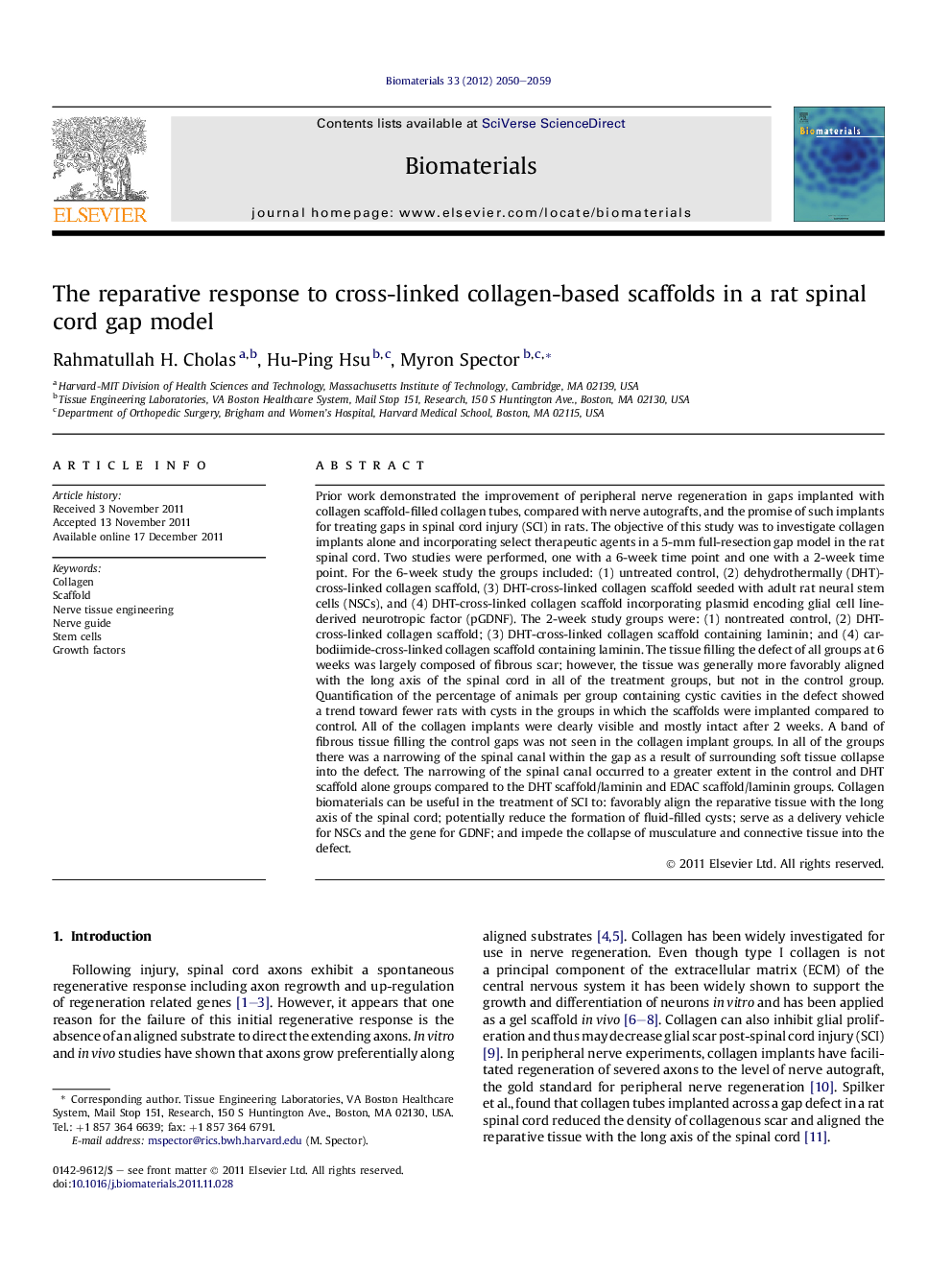| کد مقاله | کد نشریه | سال انتشار | مقاله انگلیسی | نسخه تمام متن |
|---|---|---|---|---|
| 7444 | 553 | 2012 | 10 صفحه PDF | دانلود رایگان |

Prior work demonstrated the improvement of peripheral nerve regeneration in gaps implanted with collagen scaffold-filled collagen tubes, compared with nerve autografts, and the promise of such implants for treating gaps in spinal cord injury (SCI) in rats. The objective of this study was to investigate collagen implants alone and incorporating select therapeutic agents in a 5-mm full-resection gap model in the rat spinal cord. Two studies were performed, one with a 6-week time point and one with a 2-week time point. For the 6-week study the groups included: (1) untreated control, (2) dehydrothermally (DHT)-cross-linked collagen scaffold, (3) DHT-cross-linked collagen scaffold seeded with adult rat neural stem cells (NSCs), and (4) DHT-cross-linked collagen scaffold incorporating plasmid encoding glial cell line-derived neurotropic factor (pGDNF). The 2-week study groups were: (1) nontreated control, (2) DHT-cross-linked collagen scaffold; (3) DHT-cross-linked collagen scaffold containing laminin; and (4) carbodiimide-cross-linked collagen scaffold containing laminin. The tissue filling the defect of all groups at 6 weeks was largely composed of fibrous scar; however, the tissue was generally more favorably aligned with the long axis of the spinal cord in all of the treatment groups, but not in the control group. Quantification of the percentage of animals per group containing cystic cavities in the defect showed a trend toward fewer rats with cysts in the groups in which the scaffolds were implanted compared to control. All of the collagen implants were clearly visible and mostly intact after 2 weeks. A band of fibrous tissue filling the control gaps was not seen in the collagen implant groups. In all of the groups there was a narrowing of the spinal canal within the gap as a result of surrounding soft tissue collapse into the defect. The narrowing of the spinal canal occurred to a greater extent in the control and DHT scaffold alone groups compared to the DHT scaffold/laminin and EDAC scaffold/laminin groups. Collagen biomaterials can be useful in the treatment of SCI to: favorably align the reparative tissue with the long axis of the spinal cord; potentially reduce the formation of fluid-filled cysts; serve as a delivery vehicle for NSCs and the gene for GDNF; and impede the collapse of musculature and connective tissue into the defect.
Journal: Biomaterials - Volume 33, Issue 7, March 2012, Pages 2050–2059